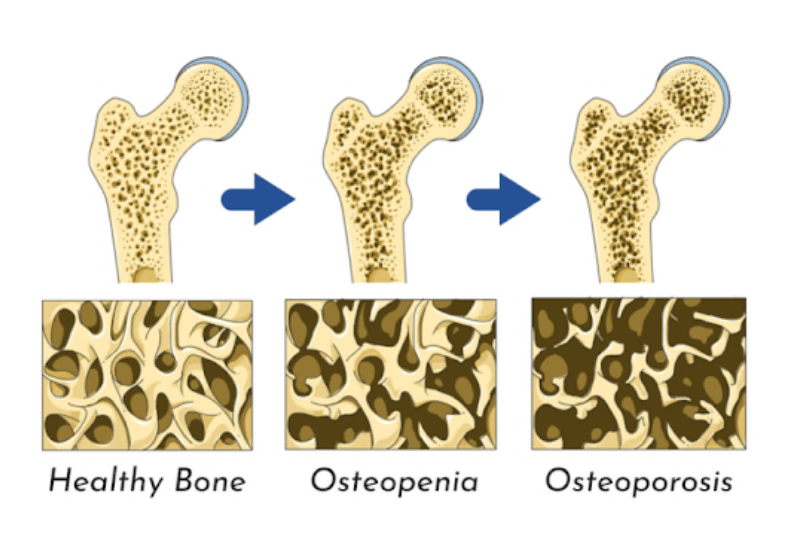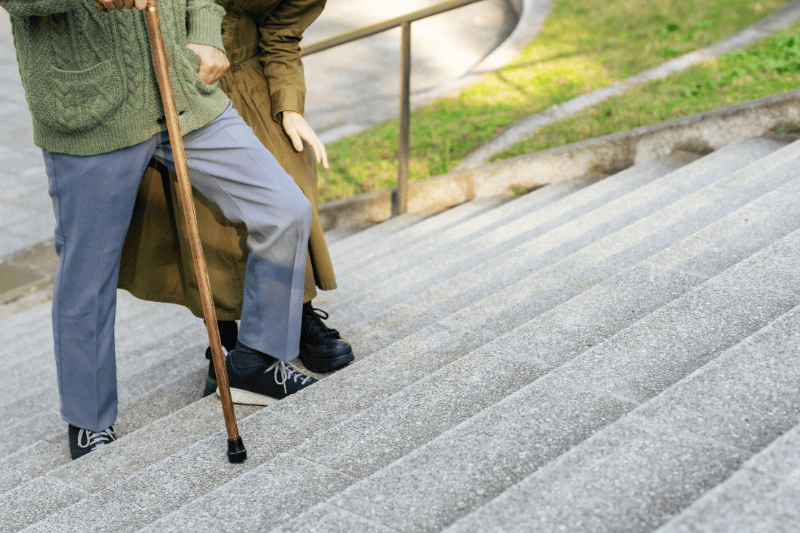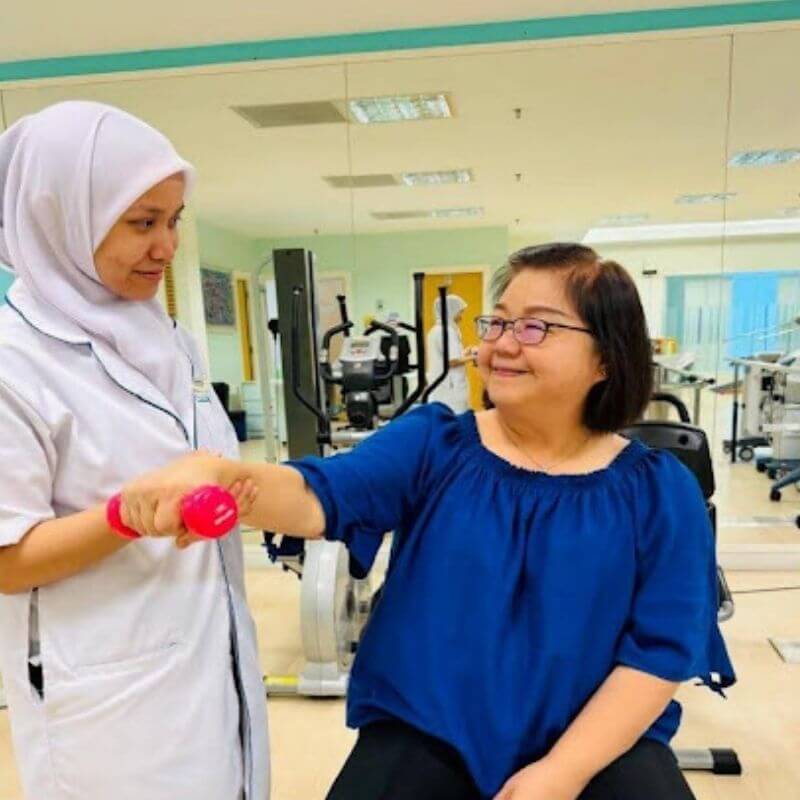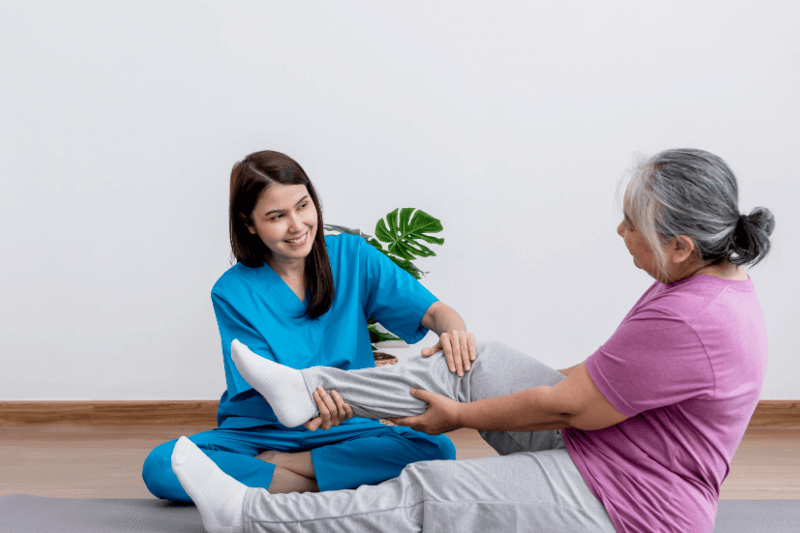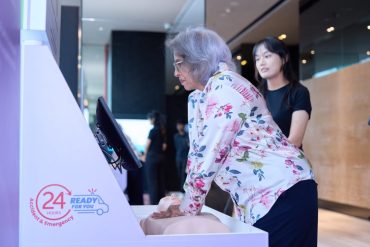Osteoporosis is often called the “silent disease” because many people do not realise they have it until a fracture occurs.
Osteoporosis occurs when bone mass decreases and the structure of the bone becomes weaker and more likely to break, even with a minor fall.
Elderly individuals face a higher risk of osteoporosis; an incident of falls and fractures is a serious concern for healthy ageing.
For many, the diagnosis can feel overwhelming, but movement, when done safely and strategically, is one of the most powerful forms of medicine.
Through weight-bearing, resistance, proprioceptive and balancing exercises under the guidance of a physiotherapist, individuals with osteopenia or osteoporosis can strengthen bones, reduce the risk of falls and risk of fractures, and regain independence even after injury.
Why Does Exercise Matter in Osteopenia and Osteoporosis?
Bones, much like muscles, respond to stress.
When we place controlled stress on bones through safe movement, they adapt by becoming stronger and denser.
Exercise not only helps improve bone mineral density but also enhances balance, coordination, and muscle strength.
Prevention of osteopenia and osteoporosis starts at an early age of life; the prime time is before 30 years old.
Ensure adequate intake of calcium and vitamin D through diet and sun exposure, and engage in regular weight-bearing and muscle-strengthening exercises.
Goals of Physiotherapy
The main goal of physiotherapy for individuals with osteopenia or osteoporosis is to build strength from the inside out.
It focuses on helping the body increase or maintain bone density through safe, targeted exercises that stimulate bone growth.
At the same time, physiotherapy works to strengthen the muscles that support those bones, improving overall stability and endurance.
Equally important, it enhances coordination, proprioception, and balance, empowering individuals to move confidently and safely in their daily routines while reducing the risk of falls or fractures.
Exercises Focused on Strength, Balance, and Stability
A well-rounded exercise plan for osteopenia combines different types of movement, each serving a specific purpose in maintaining bone health, muscle strength, and coordination
Under proper guidance, these exercises can be done safely and progressively to build confidence and independence.
Weight-Bearing Exercises: These movements encourage stronger bones by working against gravity while staying upright.
They help stimulate bone-forming cells and improve endurance in key areas like the hips, legs, and spine. Examples include:
-
Jogging or brisk walking
-
Stair climbing, which adds intensity and strengthens the lower body
-
Dancing, which engages multiple muscle groups while improving coordination and balance
-
Playing sports such as soccer, badminton, pickleball, or tennis
-
Aerobics
Resistance Exercises: Resistance training supports bone health by strengthening the muscles that protect and stabilise the skeleton.
Using controlled movements helps reduce injury risk while improving posture and mobility. Examples include:
-
Gym exercises using weight training machines
-
Swimming or walking in water, where water resistance strengthens muscles gently and safely
Coordination, Proprioception, and Balance Exercises: These exercises help improve body awareness and stability, reducing the risk of falls and enhancing confidence in movement. Examples include:
-
Walking in water
-
Tai Chi for controlled, mindful movement
-
Single-leg standing (initially with supervision)
-
Walking on wobbly or uneven surfaces (with supervision)
-
Stepping over obstacles (with supervision)
Stage of Osteoporosis
To determine the current stage of osteoporosis, it is strongly recommended to consult an endocrinologist and dietitian.
Perform these exercises at least 5 times per week, each session at least 45 minutes, and alternate among all the recommended exercises.
Recovery After an Osteoporotic Fracture
Physiotherapists play a vital role in guiding safe movement strategies for people with osteoporosis, especially those recovering from fractures.
A tailored programme from a physiotherapist ensures that exercises are not only effective but also safe for each person’s condition and abilities.
A fracture related to osteoporosis, such as a hip or spine fracture, can feel like a major setback.
But recovery is possible with the right approach.
Rehabilitation focuses on gradual progression, always prioritising safety.
Early Phase: Pain management and mobility exercises are introduced to prevent stiffness and circulation problems.
Intermediate Phase: Strengthening and balancing exercises are added to restore independence.
Advanced Phase: Functional training, such as practising daily tasks, helps individuals return to normal routines.
Throughout recovery, physiotherapists emphasise correct posture and correct technique in transferring from one position to another position.
This includes getting out of bed safely, sitting to standing and vice versa, walking and fall-prevention strategies.
Key Physiotherapy Objectives in Recovery
Physiotherapy after an osteoporotic fracture focuses on restoring function, reducing pain, and rebuilding confidence step by step.
Pain management: Physiotherapists use gentle exercises, manual therapy, and electrotherapy to help reduce discomfort and promote relaxation.
Bone healing: In cases of delayed or nonunion fractures, laser therapy may be used to stimulate bone regeneration and accelerate healing.
Restoring joint mobility: Continuous passive motion machines and targeted exercises address joint stiffness, improving flexibility and allowing patients to resume daily activities with greater ease.
Strength and balance training: Specific muscle groups are strengthened to support fragile bones, while balance exercises help prevent future falls and improve overall stability.
Ultimately, physiotherapy empowers individuals to move safely and confidently again, from walking across a room to reaching overhead without the fear of injury.
Targeted Exercises for Recovery
As part of physiotherapy, certain exercises are carefully selected to rebuild strength and stability while protecting weakened bones.
These movements focus on controlled, functional training that supports daily independence.
Strengthening Exercises
-
Light Weights: Handheld dumbbells can be used for gentle strength training.
-
Resistance Bands: Ideal for increasing muscle strength in the arms, shoulders, and legs.
-
Bodyweight Exercises: Functional movements such as sit-to-stand, half squats, and heel-to-toe walking help maintain the strength needed for everyday living.
Safe Exercises: What to Do and What to Avoid
Recommended Dos:
-
Listen to your body; avoid exercises that cause pain and discomfort.
-
Focus on slow, controlled movements.
-
Balancing exercises to prevent falls (with supervision initially).
-
Always keep the spine in an erect position, and practise postural exercises to strengthen back and abdominal muscles and prevent stooping.
Important Don’ts:
-
Avoid high-impact activities such as running or jumping, which may stress fragile bones.
-
Limit twisting movements (such as certain yoga or golf swings) that can strain the spine (seek advice from your physiotherapist if yoga or golf are the activities you enjoy most).
-
Skip heavy lifting that may overload the bones without proper guidance.
By following these guidelines, hopefully individuals with osteoporosis can exercise confidently and effectively, reducing their risk of injury.
Safe Routines for Older Adults with Osteoporosis
For older adults, creating a sustainable routine is key.
A safe weekly plan might include:
-
30 minutes of walking, 5 times a week (can be broken into shorter sessions).
-
Strength training with light weights or resistance bands, 2-3 times a week.
-
Balance and flexibility exercises, such as tai chi or yoga (with modifications), 2 – 3 times a week.
-
Daily posture checks and gentle stretches to maintain mobility.
These routines should always be started gradually and adapted to each person’s ability, ideally under professional guidance.
Osteoporosis does not mean giving up movement.
On the contrary, safe and structured exercise is one of the most effective ways to protect bone health, prevent fractures, and support recovery after injury.
Weight-bearing and resistance exercises stimulate bone strength, while physiotherapy ensures that movement remains safe and tailored to individual needs.
By embracing safe routines and working closely with healthcare professionals, individuals with osteoporosis or osteopenia can move with confidence, maintain independence, and enjoy a better quality of life.
Source: Ms Lee Heng Ho, Physiotherapist Manager, Columbia Asia Hospital Puchong
Disclaimer: The information provided in this article is for informational purposes only and should not be considered as medical advice from Motherhood. For any health-related concerns, it is advisable to consult with a qualified healthcare professional or medical practitioner.
For more insightful stories and fun recipes, stay tuned to Motherhood Story!






